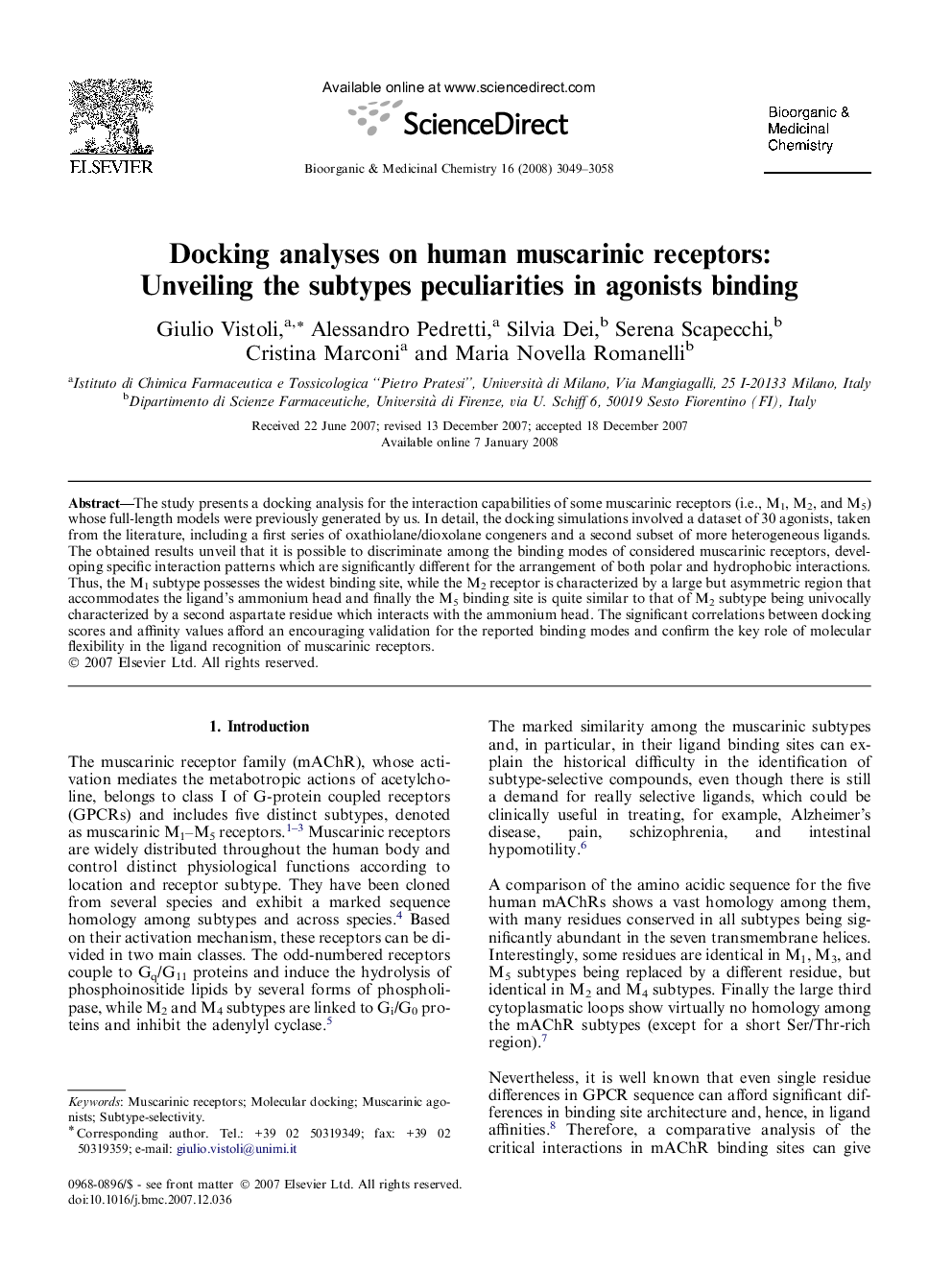| کد مقاله | کد نشریه | سال انتشار | مقاله انگلیسی | نسخه تمام متن |
|---|---|---|---|---|
| 1361167 | 981458 | 2008 | 10 صفحه PDF | دانلود رایگان |

The study presents a docking analysis for the interaction capabilities of some muscarinic receptors (i.e., M1, M2, and M5) whose full-length models were previously generated by us. In detail, the docking simulations involved a dataset of 30 agonists, taken from the literature, including a first series of oxathiolane/dioxolane congeners and a second subset of more heterogeneous ligands. The obtained results unveil that it is possible to discriminate among the binding modes of considered muscarinic receptors, developing specific interaction patterns which are significantly different for the arrangement of both polar and hydrophobic interactions. Thus, the M1 subtype possesses the widest binding site, while the M2 receptor is characterized by a large but asymmetric region that accommodates the ligand’s ammonium head and finally the M5 binding site is quite similar to that of M2 subtype being univocally characterized by a second aspartate residue which interacts with the ammonium head. The significant correlations between docking scores and affinity values afford an encouraging validation for the reported binding modes and confirm the key role of molecular flexibility in the ligand recognition of muscarinic receptors.
Figure optionsDownload as PowerPoint slide
Journal: Bioorganic & Medicinal Chemistry - Volume 16, Issue 6, 15 March 2008, Pages 3049–3058